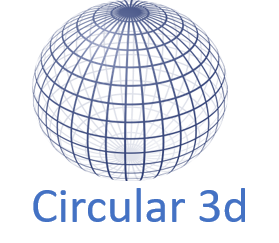Due to the corona crisis, globalisation is coming under discussion. With the virus spreading around the world, global supply chains stopped, companies can’t get important parts and medical equipment is lacking everywhere. What does this mean for the future of production? Should we decrease the impact of globalisation and switch to a model with local production?
The answers are more complex. In general global supply chains are positive as they bring together the skills of people around the world in order to produce better products. The rise of globalisation since 1990 coincides with more than a billion people rising out of extreme poverty. Trade brings nations and cultures closer together and makes the world safer. National economies are fused by the connective tissue of global companies, meaning each country has a selfish interest in helping others.
More global cooperation needed, but digital
In fact the complex challenges of our world require more and not less global cooperation. But the focus must be on the digital element. The current vulnerable supply chains must be digitalised in order to become more resistant against global shocks. As a response to the current crises, we have already seen companies adding domestic suppliers to their business. In some cases companies have used 3d printers to produce certain components because of lockdowns. The result is not only a more resilient production against global shocks but will also lead to more innovations and to a reduction of transport-related emissions.

Problem is high specialisation and standardized parts
The problem we are facing with our current system is the high specialisation which leads to the situation that there are few suppliers within a region. Sometimes there is only one physical production place that is specialised on one particular product. But even more dramatic is that we produce almost everything from standardised parts. Real innovation becomes difficult, because you have less flexibility. That’s why there is the tendency that very innovative companies follow a hight vertical integration: Instead of buying parts from suppliers, they produce parts by their own. SpaceX is a good example for that.
We have a system that tries to get an optimum from the current production technologies. The consequences are very specialised parts, that are very optimised but let no flexibility or synergy effects with other production parts. The current systems had its advantages in the past and led us to prosperity but this system is now reaching its limits. It is time for a paradigm shift.
We need a change of production towards digital physical products
This shift should enable the digitalisation of physical products. So far we only know the typical physical products as well as truly digital products, like music or software. The advantage of digital products is that they can be replicated several times and that they can be adapted quickly which can lead to complete new business models.

That is also the reason why things are quickly changing in the digital space which leads to a lot of innovations. That is not happening in the physical world. Most physical things around us did not change fundamentally. It’s pretty difficult to build something new in our current mass model production system that builds up on standardised parts. Every change is very complicated, that is why we often leave things good enough, instead of optimizing them.
Global supply chains are getting digital, the production of goods must happen local
Therefore we need Digital Physical Products: DPP’s. That are products, that are mainly digital, before they get produced. During the digital phase, they can be also treated like digital products, meaning that they can adapt to problems. Only very in the end they get physical manufactured in a standardised way. Since additive manufacturing utilizes CAD files, virtual teams across the globe can collaborate to create a shared design community. Instead of reviewing physical prototypes over video calls or having to take a flight to another country, collaborators can print their own prototypes and communicate virtually, in real time. This means they can work together more rapidly than what’s available with traditional practices.
The production of complex parts can therefore be automatized. Engineers are fully focussing on developing and improving these products digital. The global supply chain becomes completely digital, the production local.

Digital supply chain as the key technology
The digital supply chain is the key technology in order to solve the worldwide challenges, like climate change and times of disruptions, like the pandemic we are facing right now. Decentralised, automated production would help us to react more flexible with changes in demand and could produce a bigger amount of items, like medical products, if needed.
In order to realise the digital supply chain, we need to be able to produce locally. That is where 3d printing comes in. The technology still needs to evolve further but 3d printing has evolved significantly in the last 10 years. Half of all 3d printed products are already being used for endproducts.
The missing element is now the software. Instead of physical building parts we need algorithms. With better technological capabilities and more computer power we can create better algorithms. We also need a new form of trade, instead of trading physical parts, these algorithms wills be exchanged. Companies like Hyperganic are working on such software and successfully created products, like a rocket engine (see above), with it.
Towards a fairer society model
Objections might arise that this will lead to unemployment in developing countries. But these jobs are often under very unfair conditions. The change to digital physical products brings the opportunities to people around the world to exchange their ideas. Due to global supply chains, many people couldn’t benefit from the prosperity of globalisation but the rise of digital products helps people to participate in innovation and product development, independent of their location. New business models will arise, creating jobs and new services. Now we have the chance to connect the digital with the physical element. The consequences will be positive for all of us.




